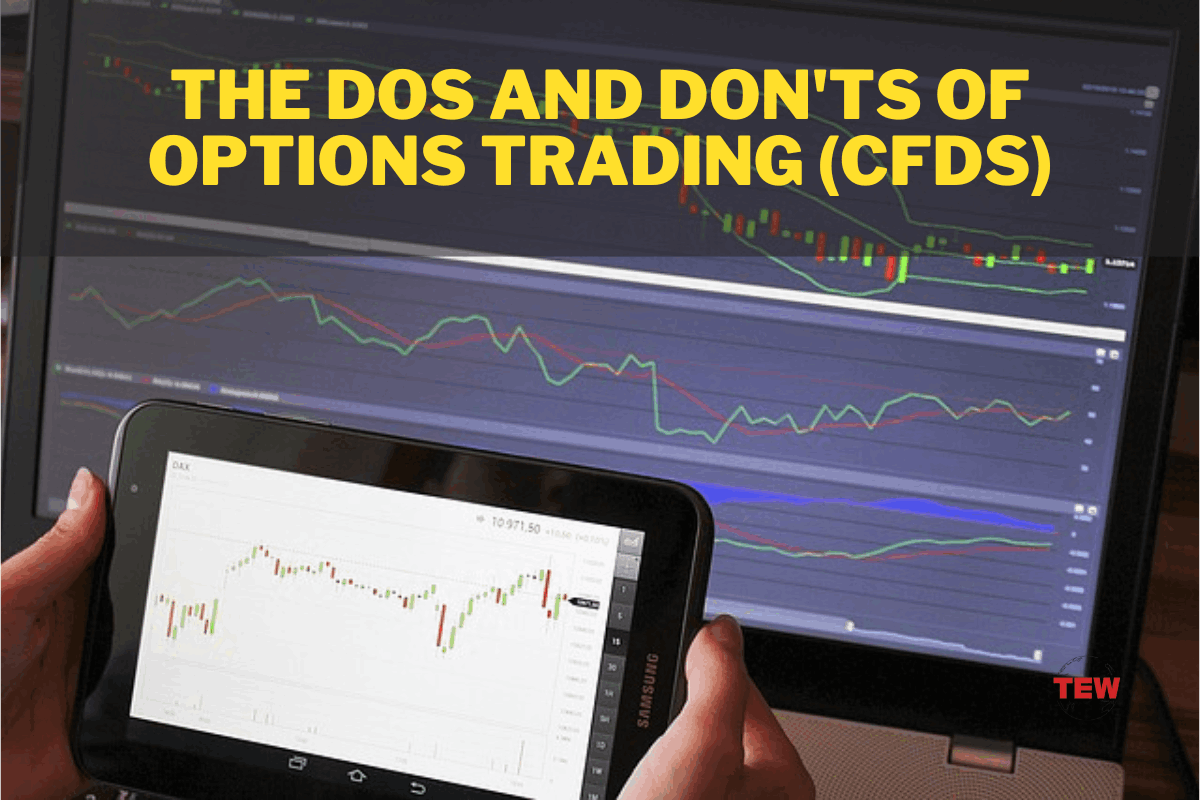Trading instruments come in all shapes and forms. Some strategies are riskier, while some more costly than others, but all have pros and cons and reasons you’d want to implement them. However, when leveraging your position, none might be better than using derivatives such as CFDs and options.
Furthermore, you can utilise the two, also known as options CFDs trading, to compound their positive effects. This strategy allows you to bolster your positions more than when trading share CFDs by enabling you to hold much more substantial stakes. For instance, with 1:3 leverage, you can trade three times more worth of CFDs on the best options trading platforms, increasing your profit potential. Keep reading to learn more about options CFDs trading, as well as what to do and avoid.
How do Options CFDs Work?
If you have an idea of how options work, you have a basic understanding of how options CFDs operate. They follow the same principles and are built on the same fundamentals. For instance, options CFDs come from traditional CFDs on other instruments. They function like standard options and offer their holder the right but not the obligation to buy or sell securities under their contracts.
As with any other options trading strategy, you can also short or go long in the market trading options CFDs. When you buy put options, you’re speculating on the market’s rising and falling with call options. However, an option CFD holder cannot buy or sell the underlying assets but stands to profit or incur losses from the price movement.
In addition, you set a strike price with every contract and determine its duration as you would with any other options contract. Your price denotes what direction you expect the market to take, the expiry date, and how long you think it will take for it to move.
The Dos- Options CFDs
1. Do Your Homework
If this is your first time trading options CFDs, take the time to learn what CFDs and options are and how they work. They can be tricky to trade for some, even on their own leave alone using a hybrid trading strategy. Once you’ve learned how they work and how to trade them on demo accounts available on most platforms, move to trade options CFDs on your real account.
2. Pick Options With Long Timelines
Options are a decaying asset and are worth less as time runs out because the market movement you expect at the end of the contract is much less likely. So it does not matter if you’re purchasing options or options CFDs; always ensure the contracts have as much time left as possible.
3. Pick the Right Platforms
Brokers are the other essential part of this process. Each platform has its primary instruments and is mainly optimised to serve them. Choose an options broker from the list we provided above and ensure their tools, fees, and terms meet your trading goals and objectives.
A platform with a user-friendly interface will also make it easy for you to trade and learn the ropes if you’re a beginner.
4. Diversify Your Portfolio
It can seem easy to put all your eggs in one promising basket, but it’s always good to remember that trading is highly risky. Expert traders will tell you to put at most 1% to 2% of your capital in a single trade to avoid overleveraging yourself.

The Don’ts- Options CFDs
1. Don’t Overleverage Your Account
Don’t be one of those traders who only place a few trades and call it a day. Look for as many profitable options CFDs opportunities as possible to hedge your bets. This way, no single loss can land a devastating blow.
2. Avoid Getting Emotional
This is easier said than done, especially for beginner traders with little to no experience and low investment capital. However, as you grow and make more winning and losing trades, you will better adapt and learn to deal with emotional situations.
3. Don’t forget to look at the Fees
Diligently picking a trading platform is essential to being profitable at any trading level. Different platforms charge different fees and also cater to varying calibres of traders. As such, ensure a broker’s fees and commissions structure align with your budgetary requirements and that you avoid falling prey to overnight and inactivity fees.





